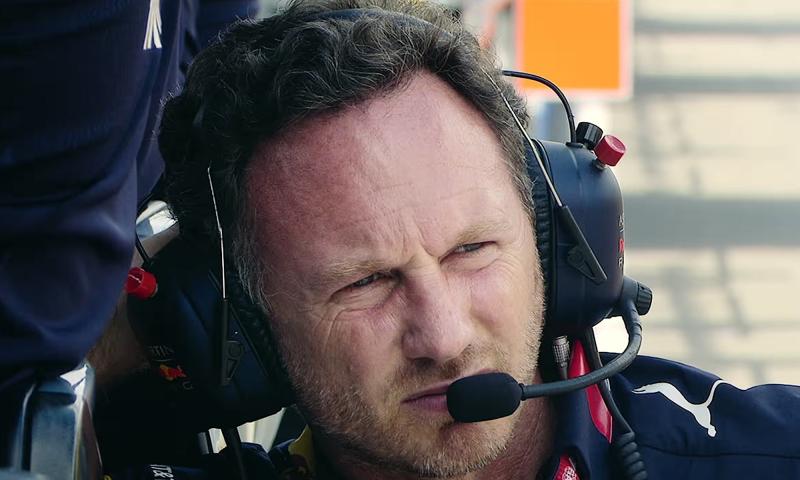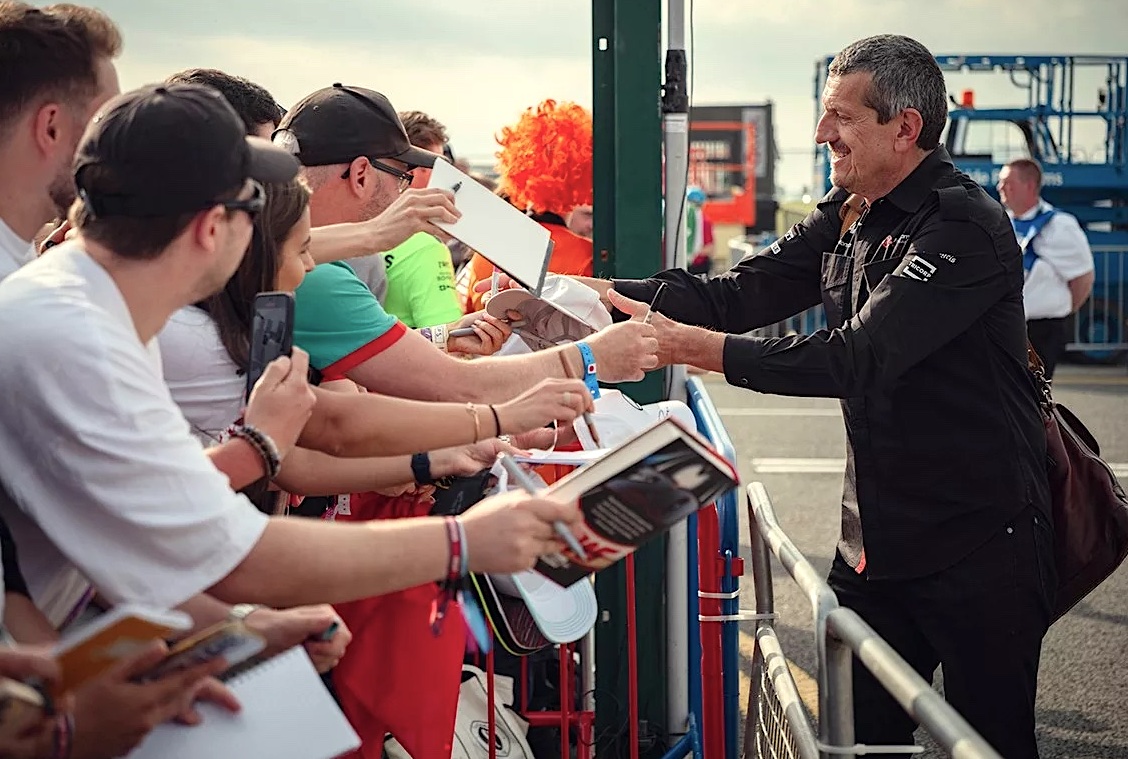Drive to Survive, Season 6, Netflix review - F1 documentary overtaken by events | reviews, news & interviews
Drive to Survive, Season 6, Netflix review - F1 documentary overtaken by events
Drive to Survive, Season 6, Netflix review - F1 documentary overtaken by events
Real-life dramas in the paddock were too late to make the cut

When the first season of Drive to Survive launched on Netflix in 2019, it was greeted with suspicion by some in the Formula One paddock. But with its sixth season now up on Netflix, just ahead of next weekend’s 2024 season-opening race in Bahrain, the show can congratulate itself for having helped to bring about a revolution within Formula One.
It’s credited with bringing the sport to vast new swathes of viewers, many of whom are female, and has enabled F1’s owners, the entertainment colossus Liberty Media, to achieve the holy grail of massive success in the USA.
F1 has battled for decades to crack the US market and has staged races there at numerous venues, but has never previously been able to rival America’s biggest home-grown sports like NFL football and NBL basketball. Now, it’s racing at three US venues, with the Las Vegas Grand Prix making its debut last year amid garish fanfare and showbiz glitz, like a mashup of the Oscars and the Superbowl. Vegas gets full-frontal, 360-degree coverage in the new series, though world champ Max Verstappen’s criticisms that the event was “99 per cent show, one per cent sporting event” haven’t made it into the final edit. Strange, that (Verstappen pictured below).
Still, D2S’s producers must be tearing their hair out that allegations of Red Bull supremo Christian Horner’s “inappropriate behaviour” and Lewis Hamilton’s shock move to Ferrari occurred too late for inclusion in the new series. The fact that we see Hamilton pledging his continuing allegiance to Mercedes merely rubs salt into the wound, as he comments that “there just never feels like a time where I’m not going to be a Mercedes driver. That’s my home. It’s my family.” Ouch.
 All that aside, having struck upon its winning formula (which includes the revelation that F1 people get very angry and say “fuck” more often than gangsters in a Scorsese movie), how does Drive to Survive avoid repeating itself? It has earned itself some criticism for the way it has seemed to create storm-in-a-teacup controversies via sleight of hand in the editing suite, creating a bit of fake drama to keep viewers titillated, while the novelty of its approach is bound to wear off as the seasons roll by.
All that aside, having struck upon its winning formula (which includes the revelation that F1 people get very angry and say “fuck” more often than gangsters in a Scorsese movie), how does Drive to Survive avoid repeating itself? It has earned itself some criticism for the way it has seemed to create storm-in-a-teacup controversies via sleight of hand in the editing suite, creating a bit of fake drama to keep viewers titillated, while the novelty of its approach is bound to wear off as the seasons roll by.
It may even risk becoming a kind of high-speed, over-bred soap. Indeed, one of its producers, Paul Martin, commented that “it’s got all the ingredients of a returning sitcom or drama series.” Certainly there's sometimes a sense now that the participants are playing to the cameras, rather than being dispassionately observed.
Another potential problem is Verstappen fatigue. Red Bull’s ace driver won 19 out of 22 races last season, which was great for them but rather wearisome for all the other teams and their fans. D2S has sidestepped the issue by focussing instead on the battles going on further down the grid. For instance we see Williams, with their amusingly geeky new team boss James Vowles, successfully dragging themselves off the bottom of the table, while poor old Otmar Szafnauer, boss of the troubled Alpine squad and seemingly a lovely chap, gets the boot halfway through the season (schadenfreude is another of D2S’s guilty pleasures). The F1 paddock also has a new villain in the form of Canadian billionaire Laurence Stroll, executive chairman of Aston Martin. Burly, bearded and intimidating, with cowering underlings scattering before him, you can easily imagine him tipping rivals into his private shark tank.
But have we seen the last of Haas’s team principal Guenther Steiner (pictured below), the expletive-undeleted extrovert who has been the show’s breakout star? A repeating motif in the new series is Steiner’s phone calls to Haas supremo Gene Haas (we keep hearing Guenther saying “Hi, Gene” as he closes his office door behind him), as he has to keep giving his employer yet more bad news as the team slithers helplessly to the bottom of the F1 heap. A final caption in the last episode tells us that Guenther is no longer employed by Haas, though apparently he now has a job with German TV. And of course his book Surviving To Drive has made him a bestselling author.
Meanwhile, the vertiginous rise in F1’s profile has had other wide-ranging effects. Box to Box films, the UK production company behind Drive to Survive, has unlocked a runaway sports-documentary boom. Its portfolio now includes Break Point (tennis), Full Swing (golf) and Tour de France: Unchained, all on Netflix, with series on rugby and soccer in the pipeline. As the company’s James Gay-Rees sees it, “all sports are competing for the same younger audience. Modern audiences are fascinated by what goes on with athletes behind the scenes.” Netflix has also launched NASCAR: Full Speed, which is basically Drive to Survive for American stock car racing. F1’s new visibility has resulted in TV films examining niche aspects of the sport which surely wouldn’t have been made previously. Disney+ recently delivered Brawn: The Impossible Formula 1 Story, the amazing tale of Jenson Button's 2009 world championship. Villeneuve Pironi: Racing’s Untold Tragedy (Sky Documentaries) evoked an ill-starred rivalry from the 1980s, and Sky also made Stewart, a biography of Sir Jackie which brought home the appalling human cost of motor racing before they invented health and safety. Bernie Ecclestone made his own series, Lucky! (Discovery +), a fascinating personal history of F1 and his role in building it.
F1’s new visibility has resulted in TV films examining niche aspects of the sport which surely wouldn’t have been made previously. Disney+ recently delivered Brawn: The Impossible Formula 1 Story, the amazing tale of Jenson Button's 2009 world championship. Villeneuve Pironi: Racing’s Untold Tragedy (Sky Documentaries) evoked an ill-starred rivalry from the 1980s, and Sky also made Stewart, a biography of Sir Jackie which brought home the appalling human cost of motor racing before they invented health and safety. Bernie Ecclestone made his own series, Lucky! (Discovery +), a fascinating personal history of F1 and his role in building it.
At the cinema, F1’s box office potential was signalled by the acclaimed documentary Senna (2010), on which Gay-Rees was a producer and which may have sown the seed of Drive to Survive. Later this year Netflix will launch its own Senna, a six-part dramatisation of the Brazilian champion’s life.
Motor racing-related material is springing up everywhere. Brad Pitt has been provoking hysteria by turning up at race tracks to film his upcoming Formula One movie, possibly to be called Apex, and what better moment for Michael Mann’s Ferrari to emerge after a 30-year gestation. Further evidence that F1 is the new rock’n’roll is the news that Ryan Reynolds and Rob McElhenney, who have enjoyed an amazing success story with Wrexham AFC and its matching documentary series, have purchased a sizeable stake in the Alpine F1 team.
Veteran fans brought up on, for instance, John Frankenheimer’s classic 1960s movie Grand Prix might lament that the sport’s golden age is over, but others will insist that it has only just begun. The latter would include Sara Eisen, presenter of CNBC’s documentary Inside Track: The Business of Formula 1. She argues that F1 “stands firmly at the intersection of sports, technology and culture.” She may even be right.
more TV
 Blue Lights Series 2, BBC One review - still our best cop show despite a slacker structure
The engaging Belfast cops are less tightly focused this time around
Blue Lights Series 2, BBC One review - still our best cop show despite a slacker structure
The engaging Belfast cops are less tightly focused this time around
 Baby Reindeer, Netflix review - a misery memoir disturbingly presented
Richard Gadd's double traumas are a difficult watch but ultimately inspiring
Baby Reindeer, Netflix review - a misery memoir disturbingly presented
Richard Gadd's double traumas are a difficult watch but ultimately inspiring
 Anthracite, Netflix review - murderous mysteries in the French Alps
Who can unravel the ghastly secrets of the town of Lévionna?
Anthracite, Netflix review - murderous mysteries in the French Alps
Who can unravel the ghastly secrets of the town of Lévionna?
 Ripley, Netflix review - Highsmith's horribly fascinating sociopath adrift in a sea of noir
Its black and white cinematography is striking, but eventually wearying
Ripley, Netflix review - Highsmith's horribly fascinating sociopath adrift in a sea of noir
Its black and white cinematography is striking, but eventually wearying
 Scoop, Netflix review - revisiting a Right Royal nightmare
Gripping dramatisation of Newsnight's fateful Prince Andrew interview
Scoop, Netflix review - revisiting a Right Royal nightmare
Gripping dramatisation of Newsnight's fateful Prince Andrew interview
 RuPaul’s Drag Race UK vs the World Season 2, BBC Three review - fun, friendship and big talents
Worthy and lovable winners (no spoilers) as the best stay the course
RuPaul’s Drag Race UK vs the World Season 2, BBC Three review - fun, friendship and big talents
Worthy and lovable winners (no spoilers) as the best stay the course
 This Town, BBC One review - lurid melodrama in Eighties Brummieland
Steven Knight revisits his Midlands roots, with implausible consequences
This Town, BBC One review - lurid melodrama in Eighties Brummieland
Steven Knight revisits his Midlands roots, with implausible consequences
 Passenger, ITV review - who are they trying to kid?
Andrew Buchan's screenwriting debut leads us nowhere
Passenger, ITV review - who are they trying to kid?
Andrew Buchan's screenwriting debut leads us nowhere
 3 Body Problem, Netflix review - life, the universe and everything (and a bit more)
Mind-blowing adaptation of Liu Cixin's novel from the makers of 'Game of Thrones'
3 Body Problem, Netflix review - life, the universe and everything (and a bit more)
Mind-blowing adaptation of Liu Cixin's novel from the makers of 'Game of Thrones'
 Manhunt, Apple TV+ review - all the President's men
Tobias Menzies and Anthony Boyle go head to head in historical crime drama
Manhunt, Apple TV+ review - all the President's men
Tobias Menzies and Anthony Boyle go head to head in historical crime drama
 The Gentlemen, Netflix review - Guy Ritchie's further adventures in Geezerworld
Riotous assembly of toffs, gangsters, travellers, rogues and misfits
The Gentlemen, Netflix review - Guy Ritchie's further adventures in Geezerworld
Riotous assembly of toffs, gangsters, travellers, rogues and misfits
 Oscars 2024: politics aplenty but few surprises as 'Oppenheimer' dominates
Christopher Nolan biopic wins big in a ceremony defined by a pink-clad Ryan Gosling and Donald Trump seeing red
Oscars 2024: politics aplenty but few surprises as 'Oppenheimer' dominates
Christopher Nolan biopic wins big in a ceremony defined by a pink-clad Ryan Gosling and Donald Trump seeing red

Add comment